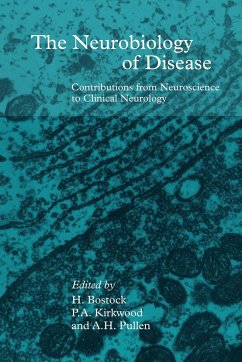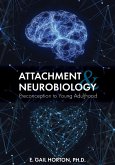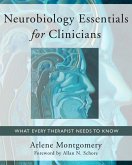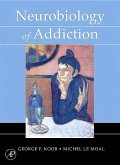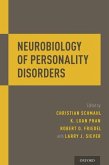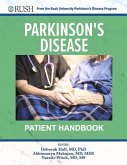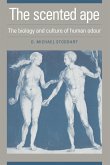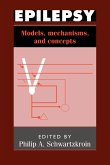The Neurobiology of Disease
Contributions from Neuroscience to Clinical Neurology
Herausgeber: Bostock, Hugh; Pullen, A. H.; Kirkwood, P. A.
The Neurobiology of Disease
Contributions from Neuroscience to Clinical Neurology
Herausgeber: Bostock, Hugh; Pullen, A. H.; Kirkwood, P. A.
- Broschiertes Buch
- Merkliste
- Auf die Merkliste
- Bewerten Bewerten
- Teilen
- Produkt teilen
- Produkterinnerung
- Produkterinnerung
This 1996 volume demonstrates the value of interactions between neurology and the basic sciences that underpin it.
Andere Kunden interessierten sich auch für
![Attachment and Neurobiology Attachment and Neurobiology]() E. Gail HortonAttachment and Neurobiology91,99 €
E. Gail HortonAttachment and Neurobiology91,99 €![Neurobiology Essentials for Clinicians Neurobiology Essentials for Clinicians]() Arlene MontgomeryNeurobiology Essentials for Clinicians61,99 €
Arlene MontgomeryNeurobiology Essentials for Clinicians61,99 €![Neurobiology of Addiction Neurobiology of Addiction]() George F KoobNeurobiology of Addiction224,99 €
George F KoobNeurobiology of Addiction224,99 €![Neurobiology of Personality Disorders Neurobiology of Personality Disorders]() Neurobiology of Personality Disorders118,99 €
Neurobiology of Personality Disorders118,99 €![Parkinson's Disease Patient Handbook: From the Rush University Parkinson's Disease Program Parkinson's Disease Patient Handbook: From the Rush University Parkinson's Disease Program]() Deborah HallParkinson's Disease Patient Handbook: From the Rush University Parkinson's Disease Program19,99 €
Deborah HallParkinson's Disease Patient Handbook: From the Rush University Parkinson's Disease Program19,99 €![The Scented Ape The Scented Ape]() D. Michael StoddartThe Scented Ape79,99 €
D. Michael StoddartThe Scented Ape79,99 €![Epilepsy Epilepsy]() Philip A. Schwartzkroin (ed.)Epilepsy156,99 €
Philip A. Schwartzkroin (ed.)Epilepsy156,99 €-
-
-
This 1996 volume demonstrates the value of interactions between neurology and the basic sciences that underpin it.
Hinweis: Dieser Artikel kann nur an eine deutsche Lieferadresse ausgeliefert werden.
Hinweis: Dieser Artikel kann nur an eine deutsche Lieferadresse ausgeliefert werden.
Produktdetails
- Produktdetails
- Verlag: Cambridge University Press
- Seitenzahl: 464
- Erscheinungstermin: 19. Mai 2011
- Englisch
- Abmessung: 229mm x 152mm x 27mm
- Gewicht: 748g
- ISBN-13: 9780521342384
- ISBN-10: 0521342384
- Artikelnr.: 33378946
- Herstellerkennzeichnung
- Libri GmbH
- Europaallee 1
- 36244 Bad Hersfeld
- gpsr@libri.de
- Verlag: Cambridge University Press
- Seitenzahl: 464
- Erscheinungstermin: 19. Mai 2011
- Englisch
- Abmessung: 229mm x 152mm x 27mm
- Gewicht: 748g
- ISBN-13: 9780521342384
- ISBN-10: 0521342384
- Artikelnr.: 33378946
- Herstellerkennzeichnung
- Libri GmbH
- Europaallee 1
- 36244 Bad Hersfeld
- gpsr@libri.de
Part I. Physiology and Pathophysiology of Nerve Fibres: 1. Ion channels in
normal and pathophysiological mammalian peripheral myelinated nerve J. M.
Ritchie; 2. Molecular anatomy of the node of Ranvier: newer concepts S. G.
Waxman; 3. Delayed rectifier type K+ currents in rabbit and rat axoms and
Schwann cells M. Baker; 4. Axonal signals for potassium channel expression
in Schwann cells T. Konishi; 5. Ion channels in human axons G. Reid; 6. An
in vitro model of diabetic neuropathy: electrophysiological studies P.
Grafe; 7. Autoimmunity at the neuromuscular junction J. Newsom-Davis; 8.
The immunopathology and pathophysiology of experimental autoimmune
encephalomyelitis M. P. Pender; 9. The pathophysiology of human
demyelinating neuropathies T. E. Feasby; 10. Conduction properties of
central demyelinated axons: the generation of symptoms in demyelinating
disease K. J. Smith; 11. The mechanisms of relapse and remission in
multiple sclerosis W. I. McDonald; 12. Glial transplantation in the
treatment of myelin loss or deficiency J. Rosenbluth; Part II. Pain: 13.
Human nociceptors in health and disease J. Ochoa; 14. The sensory
consequences of inflammation A. Iggo; 15. Non-voluntary motor unit activity
and myofascial pain syndromes R. H. Westgaard; 16. Is there a mechanism for
the spinal cord to remember pain? W. D. Willis Jnr; 17. The
neurophysiological basis of pain relief by acupuncture E. Shen; Part III.
Control of Central Nervous System Output: 18. Synaptic transduction in
neocortical neurones W. E. Crill; 19. Cortical circuits, synchronization
and seizures J. G. R. Jefferys; 20. Physiologically induced changes of
brain temperature and their effect on extracellular field potentials P.
Anderson, E. Moser, and V. Jensen; 21. Fusimotor patterns of respiratory
muscles A. Taylor, and R. Durbarba; 22. Cerebral accompaniments and
functional significance of the long-latency stretch reflexes in human
forearm muscles M. Aminoff, and S. Goodin; 23. The cerebellum and
proprioceptive control of movement A. Prochazka et al; 24. Roles of the
lateral nodulus and uvula of the cerebellum in cardiovascular control N.
Nishimaru; 25. Central actions of curare and gallamine: implications for
reticular reflex myoclonus W. Burke; 26. The pathophysiology of upper
motoneurone disorders H-J. Freund; 27. Modulation of hypoglossal
motoneurones by thyrotropin releasing hormone and serotonin A. J. Berger et
al; 28. Serotonin and central respiratory disorders in the newborn G.
Hilaire, D. Morin et al; 29. Are medullary respiratory neurones
multipurpose neurones? L. Grélot et al; 30. Reflex control of expiratory
motor output in dogs J. R. Romaniuk et al.; 31. Abnormal thoracoabdominal
movements in patients with chronic lung disease M. Goldman; 32. Respiratory
rhythm and apnoeas in the newborn B. Duron; 33. Cardiorespiratory
interactions during apnoea C. P. Seers; 34. Impairment of respiratory
control in neurological disease R. S. Howard; 35. The respiratory muscles
in neurological disease G. H. Mills and M. Green; Part IV. Development,
Survival, Regeneration and Death: 36. Axonal growth and plasticity in the
adult nervous system J. Diamond, and A. Gloster; 37. Target dependence of
motoneurones I. P. Johnson; 38. Rescue of neurones cross-regenerated into
foreign targets J. B. Munson, and H. Nishimura; 39. Development and repair
of neonatal mammalian spinal cord in culture J. G. Nicholls, and Z. Varga;
40. Selective neuronal vulnerability in motor neurone diseases with
reference to sparing of Onuf's nucleus A. H. Pullen; 41. Excitotoxicity in
motor neurone diseases C. Krieger.
normal and pathophysiological mammalian peripheral myelinated nerve J. M.
Ritchie; 2. Molecular anatomy of the node of Ranvier: newer concepts S. G.
Waxman; 3. Delayed rectifier type K+ currents in rabbit and rat axoms and
Schwann cells M. Baker; 4. Axonal signals for potassium channel expression
in Schwann cells T. Konishi; 5. Ion channels in human axons G. Reid; 6. An
in vitro model of diabetic neuropathy: electrophysiological studies P.
Grafe; 7. Autoimmunity at the neuromuscular junction J. Newsom-Davis; 8.
The immunopathology and pathophysiology of experimental autoimmune
encephalomyelitis M. P. Pender; 9. The pathophysiology of human
demyelinating neuropathies T. E. Feasby; 10. Conduction properties of
central demyelinated axons: the generation of symptoms in demyelinating
disease K. J. Smith; 11. The mechanisms of relapse and remission in
multiple sclerosis W. I. McDonald; 12. Glial transplantation in the
treatment of myelin loss or deficiency J. Rosenbluth; Part II. Pain: 13.
Human nociceptors in health and disease J. Ochoa; 14. The sensory
consequences of inflammation A. Iggo; 15. Non-voluntary motor unit activity
and myofascial pain syndromes R. H. Westgaard; 16. Is there a mechanism for
the spinal cord to remember pain? W. D. Willis Jnr; 17. The
neurophysiological basis of pain relief by acupuncture E. Shen; Part III.
Control of Central Nervous System Output: 18. Synaptic transduction in
neocortical neurones W. E. Crill; 19. Cortical circuits, synchronization
and seizures J. G. R. Jefferys; 20. Physiologically induced changes of
brain temperature and their effect on extracellular field potentials P.
Anderson, E. Moser, and V. Jensen; 21. Fusimotor patterns of respiratory
muscles A. Taylor, and R. Durbarba; 22. Cerebral accompaniments and
functional significance of the long-latency stretch reflexes in human
forearm muscles M. Aminoff, and S. Goodin; 23. The cerebellum and
proprioceptive control of movement A. Prochazka et al; 24. Roles of the
lateral nodulus and uvula of the cerebellum in cardiovascular control N.
Nishimaru; 25. Central actions of curare and gallamine: implications for
reticular reflex myoclonus W. Burke; 26. The pathophysiology of upper
motoneurone disorders H-J. Freund; 27. Modulation of hypoglossal
motoneurones by thyrotropin releasing hormone and serotonin A. J. Berger et
al; 28. Serotonin and central respiratory disorders in the newborn G.
Hilaire, D. Morin et al; 29. Are medullary respiratory neurones
multipurpose neurones? L. Grélot et al; 30. Reflex control of expiratory
motor output in dogs J. R. Romaniuk et al.; 31. Abnormal thoracoabdominal
movements in patients with chronic lung disease M. Goldman; 32. Respiratory
rhythm and apnoeas in the newborn B. Duron; 33. Cardiorespiratory
interactions during apnoea C. P. Seers; 34. Impairment of respiratory
control in neurological disease R. S. Howard; 35. The respiratory muscles
in neurological disease G. H. Mills and M. Green; Part IV. Development,
Survival, Regeneration and Death: 36. Axonal growth and plasticity in the
adult nervous system J. Diamond, and A. Gloster; 37. Target dependence of
motoneurones I. P. Johnson; 38. Rescue of neurones cross-regenerated into
foreign targets J. B. Munson, and H. Nishimura; 39. Development and repair
of neonatal mammalian spinal cord in culture J. G. Nicholls, and Z. Varga;
40. Selective neuronal vulnerability in motor neurone diseases with
reference to sparing of Onuf's nucleus A. H. Pullen; 41. Excitotoxicity in
motor neurone diseases C. Krieger.
Part I. Physiology and Pathophysiology of Nerve Fibres: 1. Ion channels in
normal and pathophysiological mammalian peripheral myelinated nerve J. M.
Ritchie; 2. Molecular anatomy of the node of Ranvier: newer concepts S. G.
Waxman; 3. Delayed rectifier type K+ currents in rabbit and rat axoms and
Schwann cells M. Baker; 4. Axonal signals for potassium channel expression
in Schwann cells T. Konishi; 5. Ion channels in human axons G. Reid; 6. An
in vitro model of diabetic neuropathy: electrophysiological studies P.
Grafe; 7. Autoimmunity at the neuromuscular junction J. Newsom-Davis; 8.
The immunopathology and pathophysiology of experimental autoimmune
encephalomyelitis M. P. Pender; 9. The pathophysiology of human
demyelinating neuropathies T. E. Feasby; 10. Conduction properties of
central demyelinated axons: the generation of symptoms in demyelinating
disease K. J. Smith; 11. The mechanisms of relapse and remission in
multiple sclerosis W. I. McDonald; 12. Glial transplantation in the
treatment of myelin loss or deficiency J. Rosenbluth; Part II. Pain: 13.
Human nociceptors in health and disease J. Ochoa; 14. The sensory
consequences of inflammation A. Iggo; 15. Non-voluntary motor unit activity
and myofascial pain syndromes R. H. Westgaard; 16. Is there a mechanism for
the spinal cord to remember pain? W. D. Willis Jnr; 17. The
neurophysiological basis of pain relief by acupuncture E. Shen; Part III.
Control of Central Nervous System Output: 18. Synaptic transduction in
neocortical neurones W. E. Crill; 19. Cortical circuits, synchronization
and seizures J. G. R. Jefferys; 20. Physiologically induced changes of
brain temperature and their effect on extracellular field potentials P.
Anderson, E. Moser, and V. Jensen; 21. Fusimotor patterns of respiratory
muscles A. Taylor, and R. Durbarba; 22. Cerebral accompaniments and
functional significance of the long-latency stretch reflexes in human
forearm muscles M. Aminoff, and S. Goodin; 23. The cerebellum and
proprioceptive control of movement A. Prochazka et al; 24. Roles of the
lateral nodulus and uvula of the cerebellum in cardiovascular control N.
Nishimaru; 25. Central actions of curare and gallamine: implications for
reticular reflex myoclonus W. Burke; 26. The pathophysiology of upper
motoneurone disorders H-J. Freund; 27. Modulation of hypoglossal
motoneurones by thyrotropin releasing hormone and serotonin A. J. Berger et
al; 28. Serotonin and central respiratory disorders in the newborn G.
Hilaire, D. Morin et al; 29. Are medullary respiratory neurones
multipurpose neurones? L. Grélot et al; 30. Reflex control of expiratory
motor output in dogs J. R. Romaniuk et al.; 31. Abnormal thoracoabdominal
movements in patients with chronic lung disease M. Goldman; 32. Respiratory
rhythm and apnoeas in the newborn B. Duron; 33. Cardiorespiratory
interactions during apnoea C. P. Seers; 34. Impairment of respiratory
control in neurological disease R. S. Howard; 35. The respiratory muscles
in neurological disease G. H. Mills and M. Green; Part IV. Development,
Survival, Regeneration and Death: 36. Axonal growth and plasticity in the
adult nervous system J. Diamond, and A. Gloster; 37. Target dependence of
motoneurones I. P. Johnson; 38. Rescue of neurones cross-regenerated into
foreign targets J. B. Munson, and H. Nishimura; 39. Development and repair
of neonatal mammalian spinal cord in culture J. G. Nicholls, and Z. Varga;
40. Selective neuronal vulnerability in motor neurone diseases with
reference to sparing of Onuf's nucleus A. H. Pullen; 41. Excitotoxicity in
motor neurone diseases C. Krieger.
normal and pathophysiological mammalian peripheral myelinated nerve J. M.
Ritchie; 2. Molecular anatomy of the node of Ranvier: newer concepts S. G.
Waxman; 3. Delayed rectifier type K+ currents in rabbit and rat axoms and
Schwann cells M. Baker; 4. Axonal signals for potassium channel expression
in Schwann cells T. Konishi; 5. Ion channels in human axons G. Reid; 6. An
in vitro model of diabetic neuropathy: electrophysiological studies P.
Grafe; 7. Autoimmunity at the neuromuscular junction J. Newsom-Davis; 8.
The immunopathology and pathophysiology of experimental autoimmune
encephalomyelitis M. P. Pender; 9. The pathophysiology of human
demyelinating neuropathies T. E. Feasby; 10. Conduction properties of
central demyelinated axons: the generation of symptoms in demyelinating
disease K. J. Smith; 11. The mechanisms of relapse and remission in
multiple sclerosis W. I. McDonald; 12. Glial transplantation in the
treatment of myelin loss or deficiency J. Rosenbluth; Part II. Pain: 13.
Human nociceptors in health and disease J. Ochoa; 14. The sensory
consequences of inflammation A. Iggo; 15. Non-voluntary motor unit activity
and myofascial pain syndromes R. H. Westgaard; 16. Is there a mechanism for
the spinal cord to remember pain? W. D. Willis Jnr; 17. The
neurophysiological basis of pain relief by acupuncture E. Shen; Part III.
Control of Central Nervous System Output: 18. Synaptic transduction in
neocortical neurones W. E. Crill; 19. Cortical circuits, synchronization
and seizures J. G. R. Jefferys; 20. Physiologically induced changes of
brain temperature and their effect on extracellular field potentials P.
Anderson, E. Moser, and V. Jensen; 21. Fusimotor patterns of respiratory
muscles A. Taylor, and R. Durbarba; 22. Cerebral accompaniments and
functional significance of the long-latency stretch reflexes in human
forearm muscles M. Aminoff, and S. Goodin; 23. The cerebellum and
proprioceptive control of movement A. Prochazka et al; 24. Roles of the
lateral nodulus and uvula of the cerebellum in cardiovascular control N.
Nishimaru; 25. Central actions of curare and gallamine: implications for
reticular reflex myoclonus W. Burke; 26. The pathophysiology of upper
motoneurone disorders H-J. Freund; 27. Modulation of hypoglossal
motoneurones by thyrotropin releasing hormone and serotonin A. J. Berger et
al; 28. Serotonin and central respiratory disorders in the newborn G.
Hilaire, D. Morin et al; 29. Are medullary respiratory neurones
multipurpose neurones? L. Grélot et al; 30. Reflex control of expiratory
motor output in dogs J. R. Romaniuk et al.; 31. Abnormal thoracoabdominal
movements in patients with chronic lung disease M. Goldman; 32. Respiratory
rhythm and apnoeas in the newborn B. Duron; 33. Cardiorespiratory
interactions during apnoea C. P. Seers; 34. Impairment of respiratory
control in neurological disease R. S. Howard; 35. The respiratory muscles
in neurological disease G. H. Mills and M. Green; Part IV. Development,
Survival, Regeneration and Death: 36. Axonal growth and plasticity in the
adult nervous system J. Diamond, and A. Gloster; 37. Target dependence of
motoneurones I. P. Johnson; 38. Rescue of neurones cross-regenerated into
foreign targets J. B. Munson, and H. Nishimura; 39. Development and repair
of neonatal mammalian spinal cord in culture J. G. Nicholls, and Z. Varga;
40. Selective neuronal vulnerability in motor neurone diseases with
reference to sparing of Onuf's nucleus A. H. Pullen; 41. Excitotoxicity in
motor neurone diseases C. Krieger.

